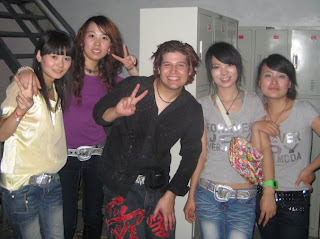
Many Chinese people, especially the older generation, are accustomed to going to traditional Chinese doctors and using traditional Chinese remedies. Traditional Chinese medicine (TCM) has a history stretching back thousands of years. TCM is an extremely rich discipline, built upon the combined experiences of famous practitioners of past dynasties, and the extensive body of medical writings they produced.
The theories of TCM are quite different from those of Western medicine. TCM considers Nature and Human to form a single whole, and emphasizes the philosophical concept known as "The Unity of Heaven and Human." Environmental factors such as the four seasons and changes in temperature and weather are believed to influence the human body, with the body and Nature forming an integrated system. For instance, when the weather is hot in the spring, humid in the summer, dry in the fall, or cold in the winter, TCM employs treatments known as "eliminating fire," "expelling dampness," "moistening the body," and "guarding against cold" respectively. All parts and systems of the body are considered to be closely connected and mutually interacting. "The outside of the body is Yang, the inside is Yin; the back is Yang, the abdomen is Yin." TCM utilizes Yin-Yang Theory and Five Elements Theory, which advocate "administering treatment according to pattern," rather than "treating the head when the head hurts; treating the foot when the foot hurts." According to the Five Elements Theory, the liver and gallbladder are Wood, the heart is Fire, the spleen and stomach are Earth, the lungs and intestines are Metal, and the kidneys and bladder are Water. When Yin and Yang are out of balance, disease and disorder result. Diagnosis relies on inspecting the complexion, smelling the breath, inquiring about symptoms, and feeling the pulse in order to determine the overall condition of the body.
Traditional Chinese remedies consist of natural preparations. Several thousand years of experimentation have determined the specific medicinal properties of numerous herbs, and the specific prescriptions and treatments that should be used for a wide range of conditions. The famous Compendium of Materia Medica , written by Li Shizhen during the Ming Dynasty (1368-1644), contains comprehensive descriptions of thousands of Chinese herbal remedies. Traditional Chinese remedies may either be taken internally or applied externally to promote the recovery of normal functioning, in accordance with the theory of "administering treatment according to pattern." Thus the saying, "Western medicine treats the symptom, Chinese medicine treats the root." As more people have become interested in alternative lifestyles in recent years, there has been a corresponding upsurge of interest in herbal medicine and non-pharmaceutical treatments. Traditional Chinese medicine and remedies have become increasingly popular around the world, and the number of Sino-foreign exchanges concerning traditional Chinese medicine and remedies has steadily increased. Japan, the United States, and Germany have established a number of cooperative projects with China, and the World Health Organization has opened seven traditional Chinese medicine centers in China.
Studies concerning acupuncture, moxibustion, and the use of acupuncture for anesthesia and pain relief have been published in 120 countries and regions around world. In 1987, the World Acupuncture Association, consisting of over 50,000 members from almost 100 countries and regions, was established in Beijing. In 1991, the International Association of Traditional Chinese Medicine was established in China, with representatives from several dozen countries jointly drafting the "Beijing Proclamation." To date, China has established medical, research, and educational exchanges in the field of TCM with more than 100 countries and regions.
If you want to look for teaching jobs in china freely,you can visit our official website: http://www.uschinajob.com





















































